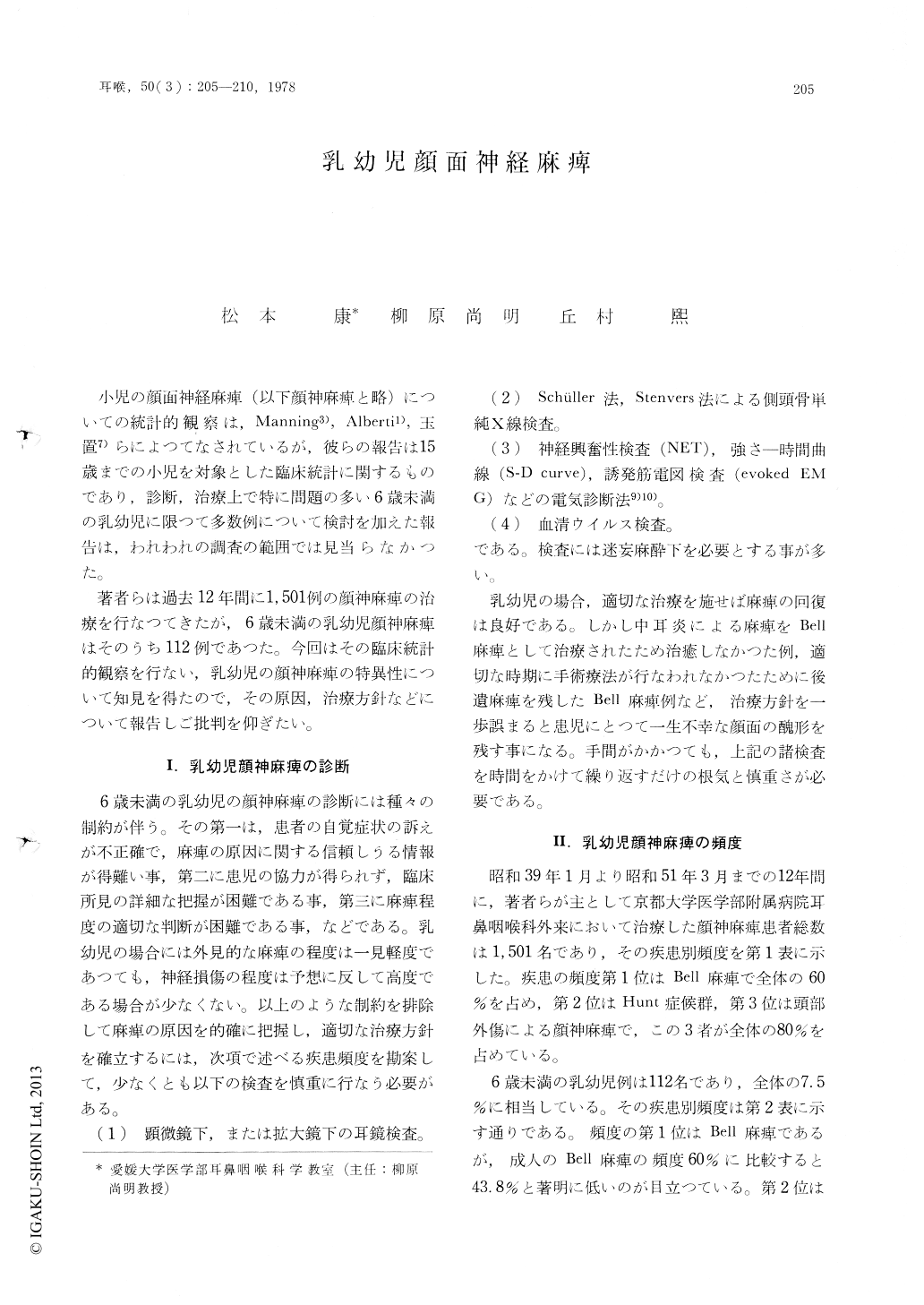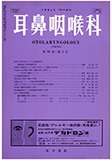Japanese
English
- 有料閲覧
- Abstract 文献概要
- 1ページ目 Look Inside
小児の顔面神経麻痺(以下顔神麻痺と略)についての統計的観察は,Manning3),Alberti1),玉置7)らによつてなされているが,彼らの報告は15歳までの小児を対象とした臨床統計に関するものであり,診断,治療上で特に問題の多い6歳未満の乳幼児に限つて多数例について検討を加えた報告は,われわれの調査の範囲では見当らなかつた。
著者らは過去12年間に1,501例の顔神麻痺の治療を行なつてきたが,6歳未満の乳幼児顔神麻療はそのうち112例であつた。今回はその臨床統計的観察を行ない,乳幼児の顔神麻痺の特異性について知見を得たので,その原因,治療方針などについて報告しご批判を仰ぎたい。
During the period of 1964 to 1976, we have treated 112 children under 6 years old affected with facial palsy, which constituted 7.5% of the total 1501 patients with facial palsies seen during the same period. Incidences of facial palsies in theinfants are significantly different from those of the adults. In the former cases, there are lower incidence of Bell's palsy and higher incidences of otogenic and congenital palsies as compared to the latter.
In order to surmount the diagnostic difficulties inherent in the infant palsy, following examinationsare essential; (1) microscopic otoscopy, (2) temporal bone radiography, (3) electrodiagnostic examinations including NET. S-D curve and evoke electromyography. and, (4) virological examination of blood serum. Administration of general anesthesiawas often required in order to perform these procedures.
In respect to findings through the above mentioned examinations three interesting cases may be specifically mentioned; one ease with masked mastoiditis; one, with bilateral facial palsy of oticorigin; and another, with congenital palsy caused by muscular hypogenesia.
Surgical treatment was highly recommended when the prognosis of the palsy appeared to be poor due to denervation of the facial nerve.

Copyright © 1978, Igaku-Shoin Ltd. All rights reserved.


